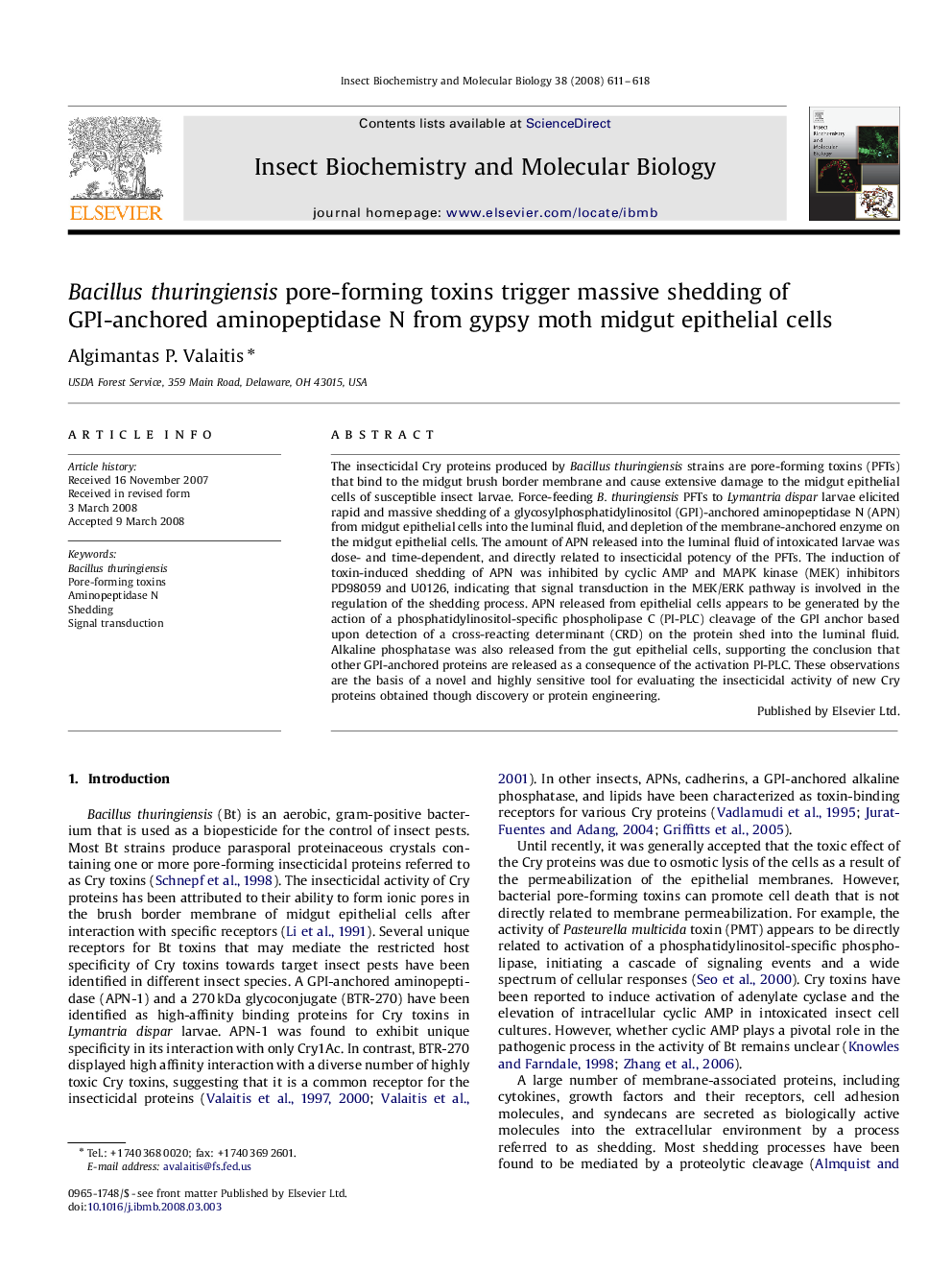| Article ID | Journal | Published Year | Pages | File Type |
|---|---|---|---|---|
| 1982845 | Insect Biochemistry and Molecular Biology | 2008 | 8 Pages |
The insecticidal Cry proteins produced by Bacillus thuringiensis strains are pore-forming toxins (PFTs) that bind to the midgut brush border membrane and cause extensive damage to the midgut epithelial cells of susceptible insect larvae. Force-feeding B. thuringiensis PFTs to Lymantria dispar larvae elicited rapid and massive shedding of a glycosylphosphatidylinositol (GPI)-anchored aminopeptidase N (APN) from midgut epithelial cells into the luminal fluid, and depletion of the membrane-anchored enzyme on the midgut epithelial cells. The amount of APN released into the luminal fluid of intoxicated larvae was dose- and time-dependent, and directly related to insecticidal potency of the PFTs. The induction of toxin-induced shedding of APN was inhibited by cyclic AMP and MAPK kinase (MEK) inhibitors PD98059 and U0126, indicating that signal transduction in the MEK/ERK pathway is involved in the regulation of the shedding process. APN released from epithelial cells appears to be generated by the action of a phosphatidylinositol-specific phospholipase C (PI-PLC) cleavage of the GPI anchor based upon detection of a cross-reacting determinant (CRD) on the protein shed into the luminal fluid. Alkaline phosphatase was also released from the gut epithelial cells, supporting the conclusion that other GPI-anchored proteins are released as a consequence of the activation PI-PLC. These observations are the basis of a novel and highly sensitive tool for evaluating the insecticidal activity of new Cry proteins obtained though discovery or protein engineering.
